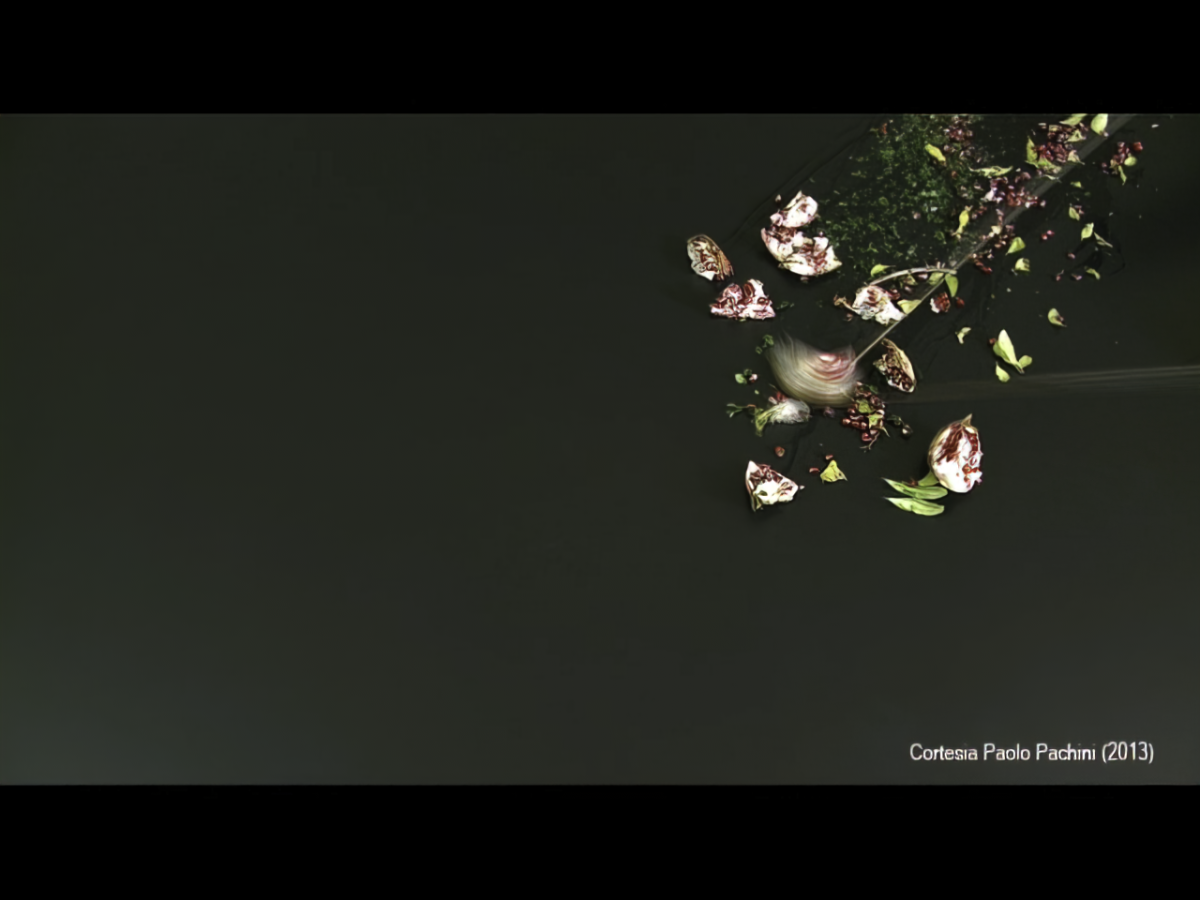(2018-2020) video and electroacoustic music [32′ 09″]
Video: Ivan Penov
Premiered at Festival Signal to Noise, livestreaming, February 6th 2021
Commissioned by La Stoppa di Elena Pantaleoni, Ancarano di Rivergaro (PC)
The work is the second part of the Trilogy of Temporality, a video-music project conceived by Roberto Doati.
The project is divided into three parts: “Il suono bianco” (The white sound), “Il suono rosso” (The red sound) and “Il suono verde” (The green sound). Each part is an audio-visual staging created by a video artist and a composer of electroacoustic music on three important Italian food realities: cheese, wine, vegetables.
- Why ‘staging’? Because the images and sounds of the territory, of the raw materials, of the processing of each food, become the characters of a narrative that is sometimes fantastic, sometimes pure tale.
- Time or temporality? The cheese is produced in one day, every day of the year and is consumed both quickly and over a long period. The wine is produced in months but only once a year and is consumed almost exclusively over a long period. The vegetables are produced in different seasons, but are distributed throughout the year and are consumed almost exclusively in a short time. However, the project also alludes to the theme of temporality, a condition of what is opposed to what is eternal, but not devoid of a spirituality peculiar to Italian culture.
Food and music both imply the ability to act and produce based on a particular set of rules and cognitive experiences. We start from basic materials (grapes – sounds) to make, through countless transformation techniques, complex materials (olfactory/gustatory structures – sounds) which, aggregated, will give life to the final work (wine – music).
The audio and video footage was distributed over time according to the rhythms and phases of static and extreme dynamism typical of wine production. If the musical part follows a linear path (from the pruning of the vineyard to the cellar), the visual part breaks the linearity by building a narrative of its own. The visual material of the different stages during the creation of the wine is broken down and recreated later by exchanging elements: making hypnotic what is violent and finding a very animated dynamism in apparently calm situations. The same happens in the continuous exchange between the colours and tones of the grapes, the earth and the mechanical processes.
The result is a hallucination of what one goes through during the processing of the grapes, as if it were a stream of sensory consciousness. The visual composition thus adheres to the chaotic nature of the dynamic processes of wine production due to weather and biological conditions that cannot be completely controlled by humans. In a very intimate audio-visual journey, these elements are questioned without distorting the material but to make visible moments that are usually invisible/unheard and at the same time ambiguous.
Roberto Doati, Ivan Penov






